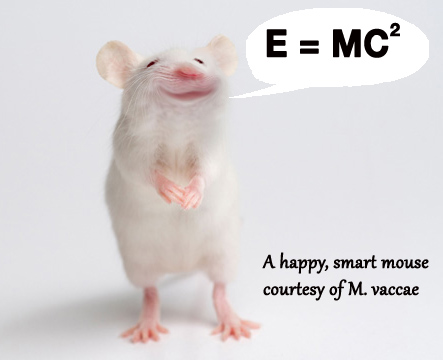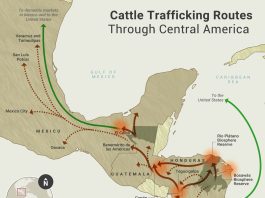Whit Hibbard has been sharing tips for how we can all improve our stockmanship skills. If you’ve missed anything in this series, here are links to all the articles.
 Let’s talk about driving our livestock because just about everything we do with our cows in particular comes down to driving, whether to summer pasture or back, into the corral, up the alley, onto the scale, through the crowd pen and up the chute, or onto the truck. And all the other practical applications (i.e., production events) that we will talk about involve driving to some degree. “Driving” refers to the active process of initiating and maintaining movement in livestock.
Let’s talk about driving our livestock because just about everything we do with our cows in particular comes down to driving, whether to summer pasture or back, into the corral, up the alley, onto the scale, through the crowd pen and up the chute, or onto the truck. And all the other practical applications (i.e., production events) that we will talk about involve driving to some degree. “Driving” refers to the active process of initiating and maintaining movement in livestock.
When talking about driving, we need to talk first about two vitally important but generally under-appreciated and overlooked prerequisites, “approaching” and “starting,” which will be the subject of this and the next column.
According to Bud Williams, “The first point of contact is critical. Most mistakes are made here. Mistakes made here are the worst; they can negatively influence the whole day.” When most cowboys go out to move cattle they don’t give any thought to how to properly approach them; “pre-Bud” I certainly didn’t. Usually we do what? We go right out and approach them head on (often with arm waiving and yelling, or sic the dogs on ‘em), but that’s a mistake. According to Bud: “You need to approach properly so you’re not a threat. . . . Animals can’t handle the emotional part of something coming directly at them to start them.” Why? Because that’s what predators do; they attack straight on. So, “if we start directly towards an animal, as soon as it starts to feel pressure and we keep coming with that pressure, we get that animal very uneasy, upset, even mad; emotions we don’t want.”
Something else that makes prey animals uncomfortable is when a predator circles them. Bud asks us to imagine a car curving towards us at a high rate of speed. How does that make us feel? Now, compare that to how we feel if that same car is coming in a straight line, but is clearly going to miss us. Obviously, in the first instance, we feel unsettled, even threatened, and that might bother us the rest of the day, whereas in the second instance, we can calculate the car’s trajectory and see that it is going to miss us, so we can relax. “So it wasn’t the car that was bothering you,” Bud observes, “it was its angle of approach, whether it was headed directly at you or whether it would just go past you. So when you approach animals to start them you want to make sure that that animal does not feel that you are coming directly at it.”
Consequently, it’s very important not to march straight in on our cattle. Rather, once we get close enough that we think we might be about to intersect their pressure zone, we need to change our approach to a straight-line oblique angle so that the animals think that we are going to go on by, as illustrated in the following photo. You can see that this rider is not going directly towards these cows and calves; rather, she is approaching at a straight-line oblique angle which allows the animals to remain comfortable and not feel threatened. This is important, even with our domestic old cows.

It’s especially important for very sensitive animals or ones that don’t know us, like newly acquired cattle or custom-grazed stockers. With these animals they first need to discover that it is okay for us to be around. So, Bud advises to stay quietly outside of their pressure zone to give them time to size us up, gauge our intentions, and show them that we aren’t aggressive and won’t do anything that bothers them. We just wait and let them get used to us being there and to relax before progressing.
When the stock are comfortable with us being around—which might only take a few minutes—we can then approach in the straight-lined oblique angle until we intersect their pressure zone. And how do we know that we are in their pressure zone? We know when they first take notice of us and are concerned about our presence. At that point it’s important to release pressure by stopping or veering away a little (i.e., changing our angle) before they move off. If the stock get nervous—even one animal—we need to release pressure so they learn that pressure has a release and that they don’t have to bolt to get that release.
 So, we approach only to where we feel the animals will move (a signal might be a head raising up) and then release pressure. This lets them know that we only want to get that close and won’t keep coming if it bothers them. Then, we watch for a relaxed look and posture before approaching closer. If we don’t do this, wilder cattle may run off to get the release, or cows might feel over-pressured and leave their calves. We need to read them and the signs and adjust accordingly before that happens.
So, we approach only to where we feel the animals will move (a signal might be a head raising up) and then release pressure. This lets them know that we only want to get that close and won’t keep coming if it bothers them. Then, we watch for a relaxed look and posture before approaching closer. If we don’t do this, wilder cattle may run off to get the release, or cows might feel over-pressured and leave their calves. We need to read them and the signs and adjust accordingly before that happens.
Once we’ve made our approach, found the animals’ pressure zone, and they are comfortable with our presence, we can start them. Stay tuned for more on this!





Thanks Whit,
I had a small mob of 35 escape through a rotten fence on a rented property the other day. They were obviously quite excited to be out and we 1 day new to me so they had only really been introduced to a bit of calm driving the day before to say hello. I was on my own, on foot, in a 150 acre field trying to move them. I did it in the end by getting them steady but before this they were marching off faster than I could walk in a direction and walking a parallel line next to them to head them was pushing them on. The temptation is to get closer to them to head them quick but in the middle of a large field this just pushes them the other way. Would it be OK to jog ahead as long as I angled away from them to keep pressure off or is it just best to let them settle and slowly make a good approach and start from there?
Comments are closed.